| View previous topic :: View next topic |
| Author |
Message |
Tracy

Joined: 15 Sep 2006
Posts: 551
Location: Toronto



|
 Posted: Apr 29, 2008 19:16 Post subject: Re: Stalactites? Posted: Apr 29, 2008 19:16 Post subject: Re: Stalactites? |
|
|
Points taken. So I will amend my labels to read:
Quartz - stalactite-like (or stalactoid orstalactitic) formations
Pyrite - [I don't know how to describe the specimen so will leave it blank for now]
Pyromorphite - columnar arrangement of crystals
In truth I had my own doubts as to whether the pyro really was a stalactite, so it wasn't unexpected that the collective opinion doesn't think so.
Still hope to see Les' stalactoid AZ specimens someday. Thanks much!
_________________
"Wisdom begins in wonder" - Socrates |
|
| Back to top |
|
 |
Peter Megaw
Site Admin

Joined: 13 Jan 2007
Posts: 973
Location: Tucson, Arizona



|
 Posted: Jul 08, 2018 16:00 Post subject: Re: Stalactites? Posted: Jul 08, 2018 16:00 Post subject: Re: Stalactites? |
|
|
Reviving this once popular theme thanks to a recent acquisition from the Kay Robertson collection...she named it "Horn of the Dilemma" for understandable reasons!!!
This remarkable...and puzzling... helictite comes from the Ojuela Mine and shows an extremely well developed Archimedes-screw morphology tapering to a point. It's also somewhat reminiscent of the growth patterns of a narwhal's spike (really an elongated tooth), but I can find no sign that there is anything organic about its origin.
The regularity of the spiral and the tapering to a point suggests a persistent systematic spiral dislocation or systematic poisoning of the growth. (Probably worth noting that the point might actually be the start of growth rather than the end, so discussions of sense of spiraling are a bit fraught?)
At first I suspected it crystallized originally as aragonite like most speleothems, but later inverted to calcite. But looking closer, the oveall coils of the screw look like they are in turn made up of smaller twisted coils like a twisted rope made up of smaller twisted threads. Under the scope it appears these threads are composed of flattened rhombohedra with their c-axes oriented perpendicular to the length of coil...so that what you see as the texture of these threads is the zig-zagging of the edges in the plane of the a-axes (this indicates growth as calcite, not aragonite) It gets wierder yet, the small scale coils appear to be coiled in the opposite sense of the major coils!! I think this may only be apparent, reflecting the fact that the trailing edge of each stacked rhombohedron points "up" and as they wind around to the "left" this creates an apparent right spiral.
I have another specimen that might shed some light here and will post pictures of it forthwith
| Mineral: | Calcite |
| Locality: | | Ojuela Mine, Mapimí, Municipio Mapimí, Durango, Mexico |  |
|
| Dimensions: | 75 x 55mm |
| Description: |
| Peter Megaw specimen (ex Kay Robertson) and photo |
|
| Viewed: |
61818 Time(s) |
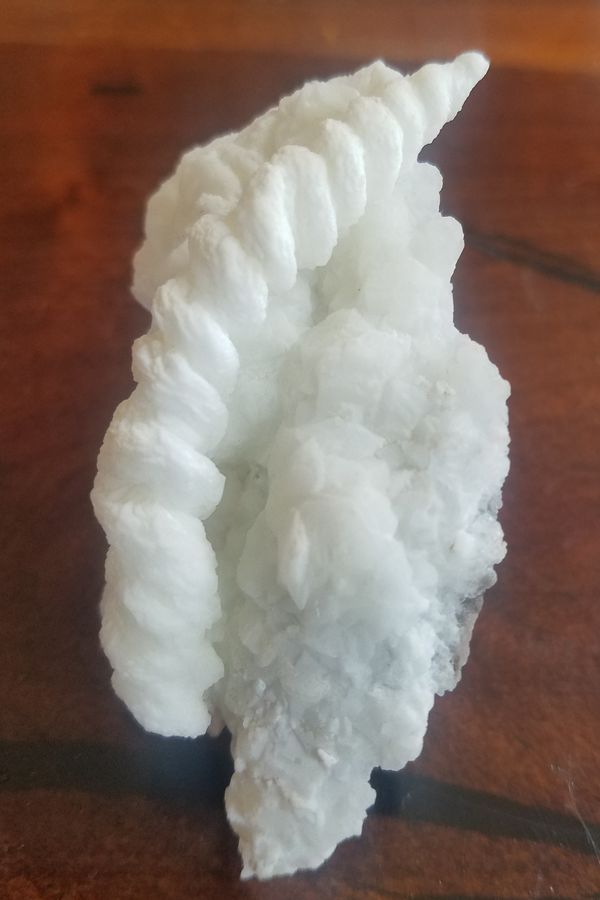
|
| Mineral: | Calcite |
| Locality: | | Ojuela Mine, Mapimí, Municipio Mapimí, Durango, Mexico |  |
|
| Dimensions: | 75 x 55 cm |
| Description: |
| Peter Megaw specimen (ex Kay Robertson) and photo |
|
| Viewed: |
61783 Time(s) |
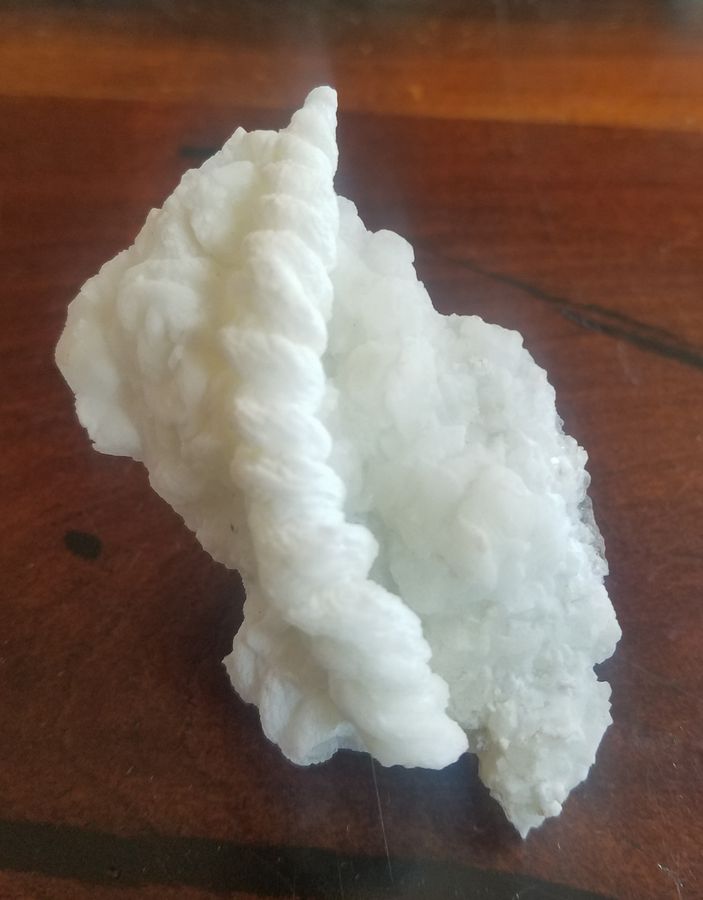
|
_________________
Siempre Adelante! |
|
| Back to top |
|
 |
Peter Megaw
Site Admin

Joined: 13 Jan 2007
Posts: 973
Location: Tucson, Arizona



|
 Posted: Jul 08, 2018 16:14 Post subject: Re: Stalactites? Posted: Jul 08, 2018 16:14 Post subject: Re: Stalactites? |
|
|
So, here's another possible member of the same spiral growth family. This stalactite is siderite and shows two very distinctive growth patterns. One is very straight and linear stemming from stacking of a series of individual rhombohedra with coincident c axes. The other shows a coiling pattern, again composed of individual rhombohedra linked along their c-axes, but with a slight spiral dislocation between each one...creating the spiral. To a lesser degree than in the Ojuela piece the patterns of the individual rhombs create a counter-spiral to the overall "left-handed" spiral.
The fact that both styles of rhomb-stacking occur on the same specimen suggests that something changed and caused the spiraling to begin after the straight growth stage....chemical or simply physical???
| Mineral: | Siderite |
| Locality: | | San Antonio Mine (San Antonio el Grande Mine), East Camp, Santa Eulalia District, Municipio Aquiles Serdán, Chihuahua, Mexico |  |
|
| Dimensions: | 180 x 35mm |
| Description: |
| Peter Megaw specimen and image |
|
| Viewed: |
61764 Time(s) |
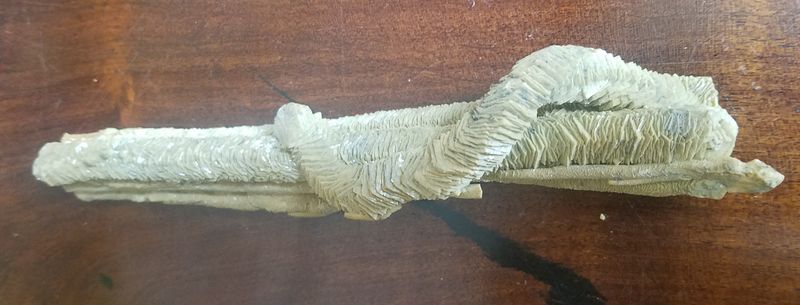
|
| Mineral: | Siderite |
| Locality: | | San Antonio Mine (San Antonio el Grande Mine), East Camp, Santa Eulalia District, Municipio Aquiles Serdán, Chihuahua, Mexico |  |
|
| Dimensions: | 180 x 35mm |
| Description: |
| Peter Megaw specimen and image |
|
| Viewed: |
61753 Time(s) |
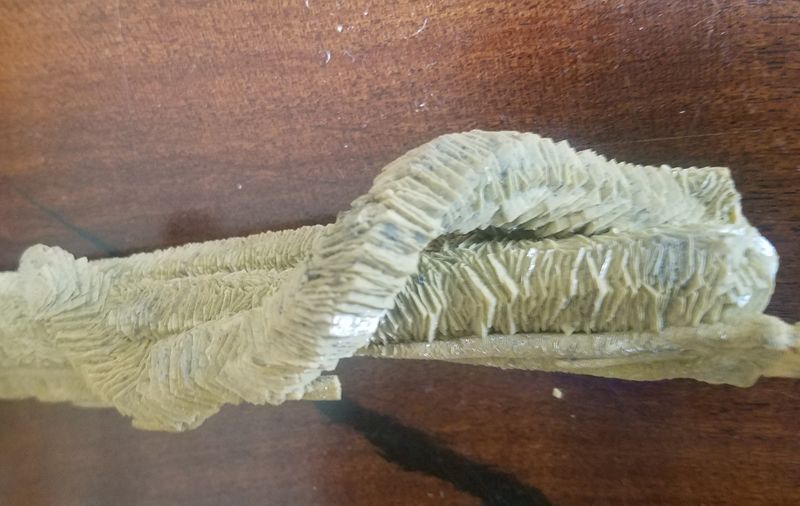
|
_________________
Siempre Adelante! |
|
| Back to top |
|
 |
Peter Megaw
Site Admin

Joined: 13 Jan 2007
Posts: 973
Location: Tucson, Arizona



|
 Posted: Jul 08, 2018 16:18 Post subject: Re: Stalactites? Posted: Jul 08, 2018 16:18 Post subject: Re: Stalactites? |
|
|
It looks the Ojuela calcite spiral is composed of individual strands twisted like the Santa Eulalia siderite.
Kay named her former specimen very well indeed!
_________________
Siempre Adelante! |
|
| Back to top |
|
 |
Roger Warin

Joined: 23 Jan 2013
Posts: 1243



|
 Posted: Jul 08, 2018 16:26 Post subject: Re: Stalactites? Posted: Jul 08, 2018 16:26 Post subject: Re: Stalactites? |
|
|
| What about chirality ?
|
|
| Back to top |
|
 |
lluis
Joined: 17 Nov 2006
Posts: 719


|
 Posted: Jul 09, 2018 03:19 Post subject: Re: Stalactites? Posted: Jul 09, 2018 03:19 Post subject: Re: Stalactites? |
|
|
"The fact that both styles of rhomb-stacking occur on the same specimen suggests that something changed and caused the spiraling to begin after the straight growth stage....chemical or simply physical???
Peter Megaw
PostPosted: Jul 08, 2018 16:00 Post subject: Re: Stalactites?"
Hard to say..... As a physics teacher said one time to a friend of mine that studied Physics, "Chemistry is only a cancer of Physics. Pity is that tumor is bigger than body!"
At those levels, just a question of chemical-physics, I guess...
With best wishes
Lluís
|
|
| Back to top |
|
 |
Roger Warin

Joined: 23 Jan 2013
Posts: 1243



|
 Posted: Jul 09, 2018 09:02 Post subject: Re: Stalactites? Posted: Jul 09, 2018 09:02 Post subject: Re: Stalactites? |
|
|
Growth of a crystal.
The growth mechanisms of the crystal seed are varied. They are correlated with the growth rates of the faces, that is with the kinetics of crystallization: either the growth is slow and two-dimensional and one obtains plane faces, or it appears screw dislocations, or even spirals according to the speed of growth.
The geometry of the atomic site varies according to surface irregularities. Some external bonds remain vacant, occupied on the surface by ligands of the hydrothermal solution which must be displaced by the deposition of a new atom of the molecule which crystallizes.
The presence of natural catalytic effects is possible by the presence of impurities in the hydrothermal phase.
Thus the crystal takes its habit.
In the case of spiral crystals, the elongation is maximal.
There is another type of spiral growth for chiral species, such as quartz. In this case, it is subparallel growths that introduce the spiral deformation as for twisted quartz (or Gwindels) with a double possibility.
At least that's what I think, and you?
|
|
| Back to top |
|
 |
lluis
Joined: 17 Nov 2006
Posts: 719


|
 Posted: Jul 09, 2018 10:06 Post subject: Re: Stalactites? Posted: Jul 09, 2018 10:06 Post subject: Re: Stalactites? |
|
|
Hi, Roger
I think I said same as you: it is chemical-physics.... (for a physician, physical-chemistry... No need to explain that chemist and physicists do not go alongs very well..... :-))
With best wishes
Lluís
|
|
| Back to top |
|
 |
Bob Harman
Joined: 06 Nov 2015
Posts: 765



|
 Posted: Jul 09, 2018 10:11 Post subject: Re: Stalactites? Posted: Jul 09, 2018 10:11 Post subject: Re: Stalactites? |
|
|
Somewhat similar to Tracy's 2008 pictured quartz examples are these 2 examples from Indiana. The first is a "stalactite" type grouping of tiny individual terminated and doubly terminated quartz crystals. The second example is more of a "free form" growth of similar tiny terminated and doubly terminated quartz crystals. I have others as well. How these form has always intrigued me.
| Mineral: | Quartz |
| Locality: | | Indiana, USA |  |
|
| Dimensions: | The quartz crystals are about 1mm each. Some crystals are doubly terminated. The free form area is 2.8 cm |
| Description: |
|
| Viewed: |
12448 Time(s) |
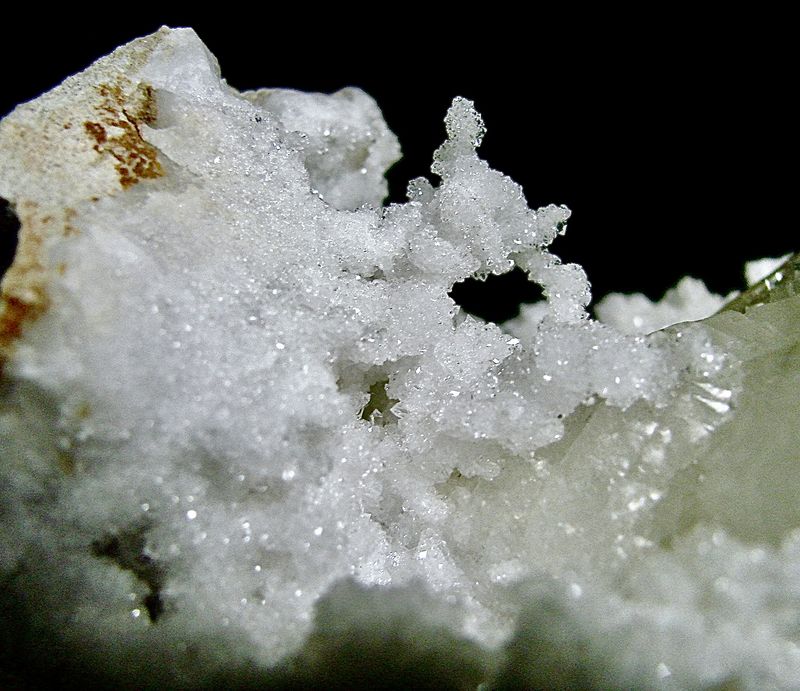
|
| Mineral: | Quartz |
| Locality: | | Indiana, USA |  |
|
| Dimensions: | The quartz crystals are 1mm. Some crystals are doubly terminated. The whole "stalactite" is 2.5 cm |
| Description: |
| Self collected about 2008 |
|
| Viewed: |
12437 Time(s) |
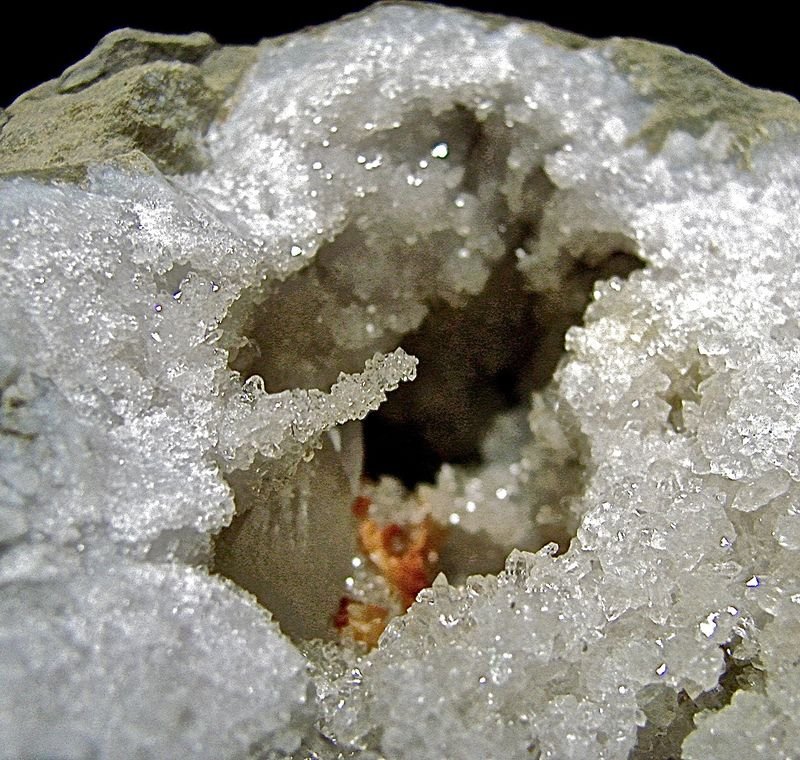
|
|
|
| Back to top |
|
 |
lluis
Joined: 17 Nov 2006
Posts: 719


|
 Posted: Jul 09, 2018 10:20 Post subject: Re: Stalactites? Posted: Jul 09, 2018 10:20 Post subject: Re: Stalactites? |
|
|
Hi, Bob
Here, to me, it is less stunning than the stalactite brought to us by Peter Megaw...
In this case, it is just a quick crystallization, growing in all places it can. Some would be in a shape, some in another... maybe just a difference in the flow of components....
Again, chemical-physics. But to my eyes, far less spectacular...
With best wishes
Lluís
|
|
| Back to top |
|
 |
|





